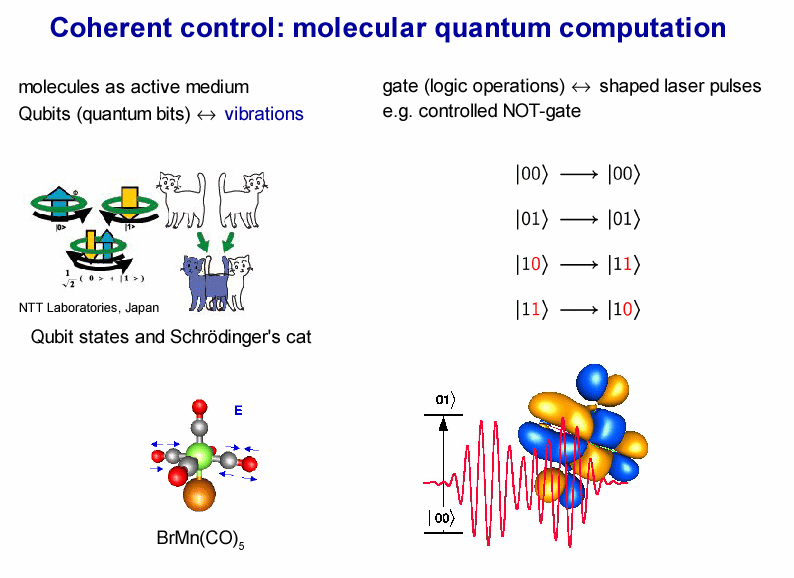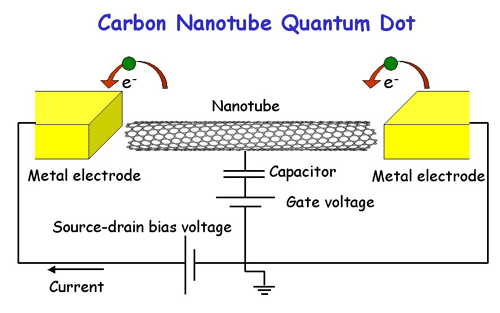
Quantum computing is based on a principle in quantum mechanics called the superposition of states . In this case, the physical nature of an object is defined by a mixture of the possible states the object can be in.
This is incredibly confusing and counter-intuitive, but it is very physical.
Remember that the unobserved cat is in two states simultaneously:

The main principle of quantum computing lies in the ability for a simple 2-bit system of up and down to, in fact, represent more than just two bits.
For example, a spin state of an electron can be a mixture of its two primary states (for a brief moment in time) and thus this is a new information state, if we can properly query it.

One problem with the idea of quantum computers is that if you try to look at the subatomic particles, you could bump them, and thereby change their value. But in quantum physics, if you apply an outside force to two atoms, it can cause them to become entangled, and the second atom can take on the properties of the first atom.
So if left alone, an atom will spin in all directions; but the instant it is disturbed it chooses one spin, or one value; and at the same time, the second entangled atom will choose an opposite spin, or value.
In principle, this allows the value of the qubits (quantum bits) to be known without
actually "lookint" at them. The act of observation (looking at them), would collapse the
qubits back into 1's or 0's.  Yes this is bizarre!
Yes this is bizarre!

Because the qubit has so many more states than the bit, massively parallel systems could be built and this would greatly increase the slope of Moore's law.

Desireable characteristics:

Ultimately, quantum computing must occur via the manipulation of individual electonrs. The superposition of its spin state is the qubit.
Since the qubit is a superposition this means that the qubit represents multiple values at one time . As more qubits are strung together, the power of the quantum processor grows exponentially.
The electrons can be initialized to some state (say all pointing up) and then subsequent interactions produces many states.

Molecular vibrations may make a natural quantum computer.

Carbon nanotube transport of individual electrons may also hold the key to where the qubits will live.

While all of this sounds cool and confusing, the main technical problem
may be a deep one. By the very nature of quantum mechanics, the interface with the real
world is mysterious. Thus, we may well be able to generate qubits of information but
we may have no way of inspecting them or getting information out of the system in any
intelligible manner.
To be sure, we can make devices that can contain individual electrons in order to generate
the qubits, but its completely unclear whether we would ever obtain coherent output from
such a device. I'm betting no.
The current challenge is not to build a full quantum computer right away but rather to move from the experiments in which we merely observe quantum phenomena to experiments in which we can control these phenomena. This is a first step towards quantum logic gates and simple quantum networks.
Quantum Interference and a good
overview of Quantum computing